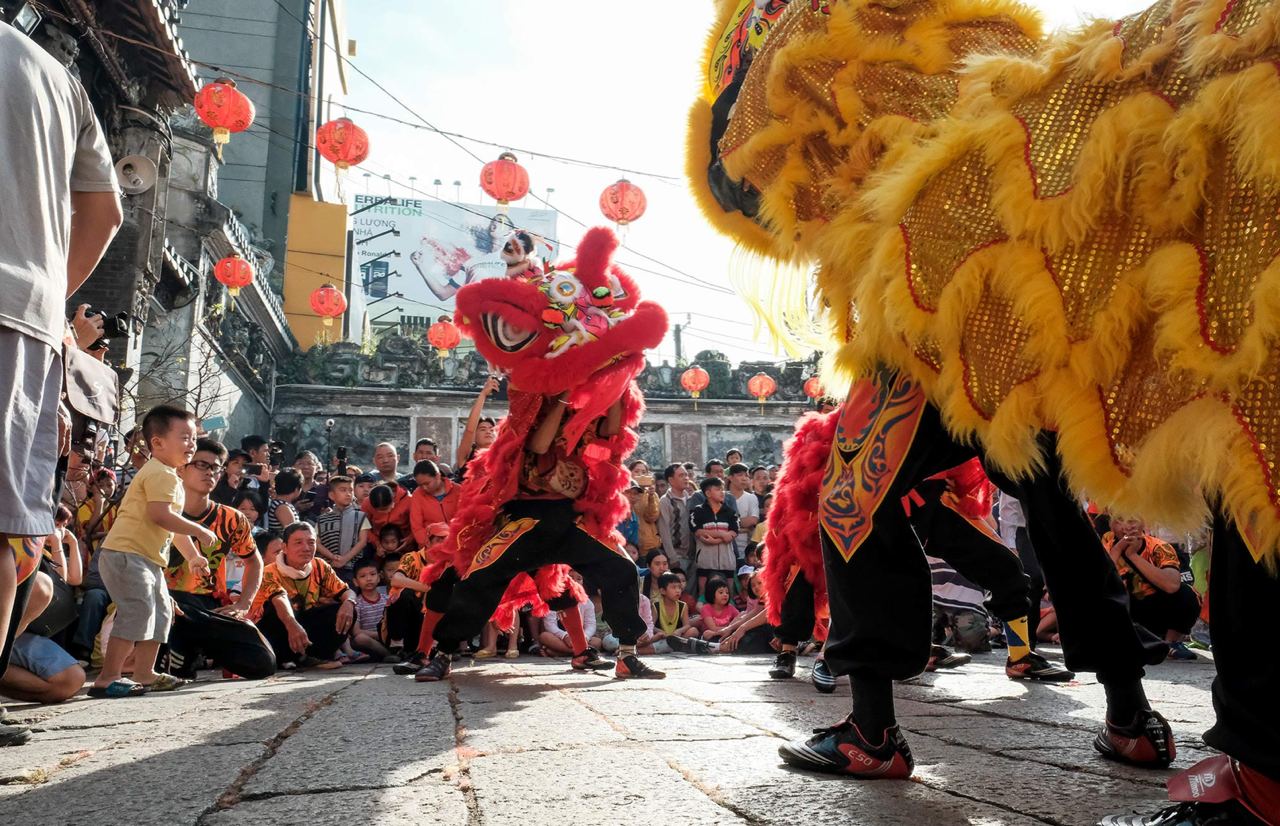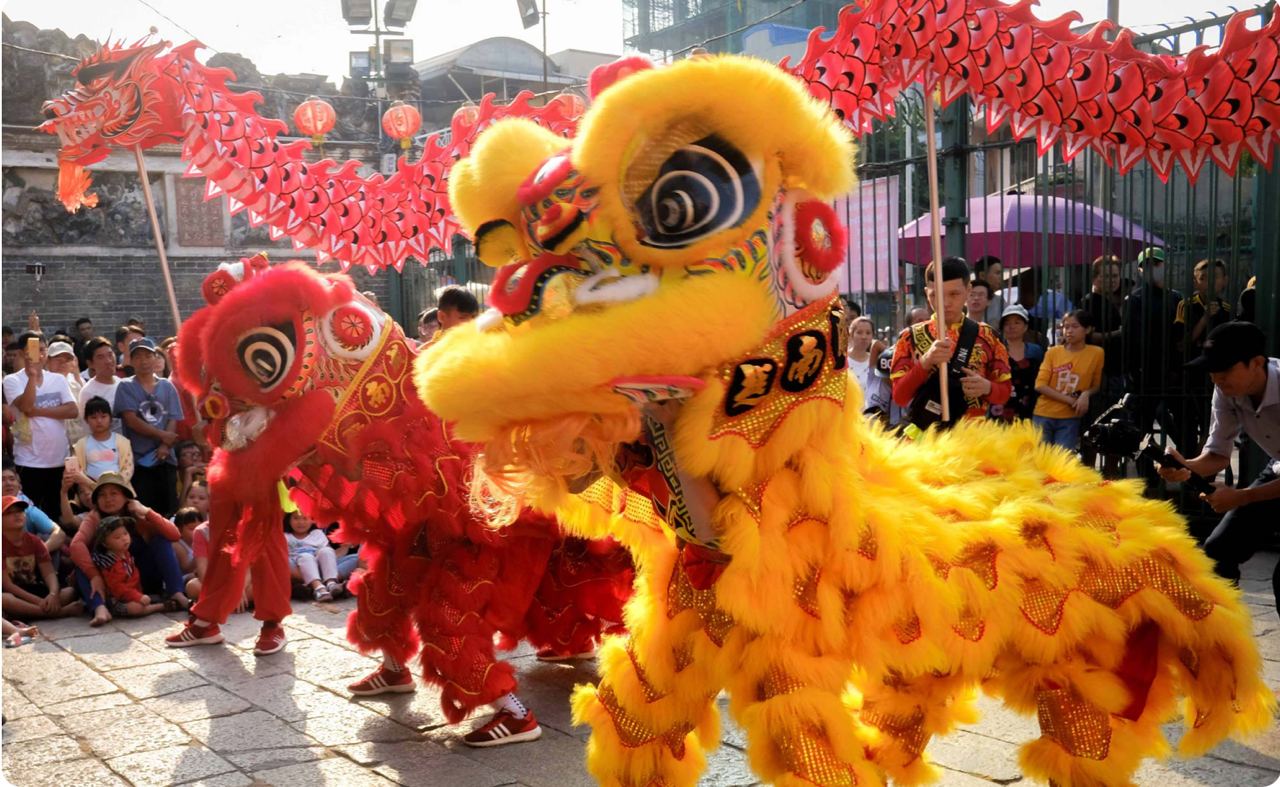The Mid-Autumn Festival’s lion dance is not just a folk art form; it also represents joy, fortune, and prosperity.
The legend of the Mid-Autumn Lion dance
According to legend, Maitreya Buddha’s tale served as the inspiration for the Mid-Autumn Festival Lion dance. According to Buddhist scriptures, Maitreya became the successor of the historical Buddha Shakyamuni, the founder of Buddhism. He descended to earth in order to tame lions and save the peasants. Maitreya Buddha is frequently shown as “Ông Địa” (Mr. Dia), a balding guy with a pot belly who is clutching a fan and donning a cheery lion-dancing mask during the Mid-Autumn Festival and Lion Dances. He amuses the lion and the crowd to bring luck, blessings, and happiness.
The Lion dance will have unique qualities depending on the festival season and the location. Additionally, depending on the locale, several names are given to the Lion dance. It is frequently referred to as “Múa Sư Tử” in the South and “Múa Lân” in the North of Viet Nam.
How the Mid-Autumn lion dance takes place
The Lion dance team often consists of one individual who dances to the beat of a drum while donning a big, vibrant lion’s head. The heads of lions are frequently intricately carved, sporting glistening plumage and jerking eyes. The lion’s long tail has a tail holder for movement and is made of vibrant cloth.
The predominant hues of Lion dance costumes are red and yellow, which conjure up images of energy, excitement, and passion. The Lion dance costume’s yellow color represents freshness in Eastern cosmologies. In addition, there is zeal, optimism, memory, illumination, and positivity. Red represents joy, fortune, and harmony. It frequently connotes joyous occasions and congrats. The Lion dance team is inspired to display solidarity by costumes, which help foster teamwork and increase the appeal of the performance.
It is crucial that Mr. Dia attend the Lion dance performance. He frequently sports an Ao Dai, is bald, and dons a mask. On the fifteenth day of the eighth lunar month, he perpetually waved his fan and delightedly joined in on jokes with the unicorns and the general populace. On this day, cheers, drums, and colorful lanterns will line the streets. Children and adults alike are given a happy and interesting environment by this.

Conclusion
The Lion dances’ accompanying music, drumming, and trumpeting are essential to the Mid-Autumn Festival’s success. These joyful sounds are a hallmark of festivals. As a result, this timeless cultural beauty is always preserved and has special significance in the contemporary world.
